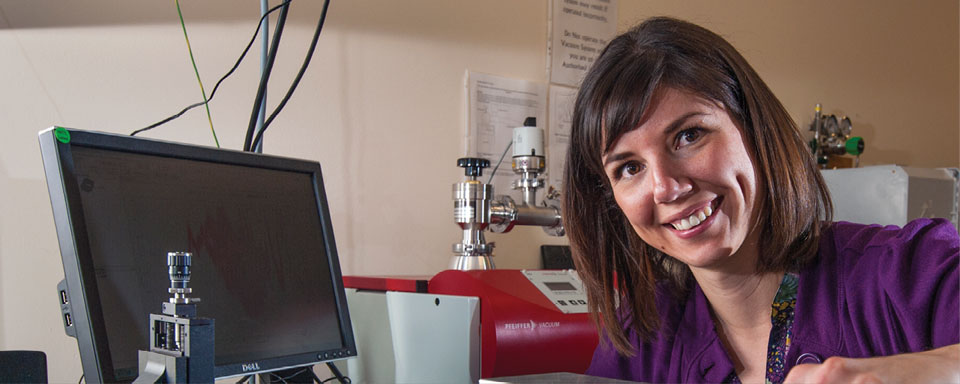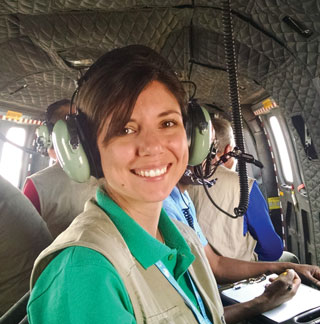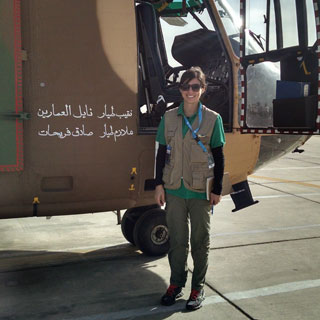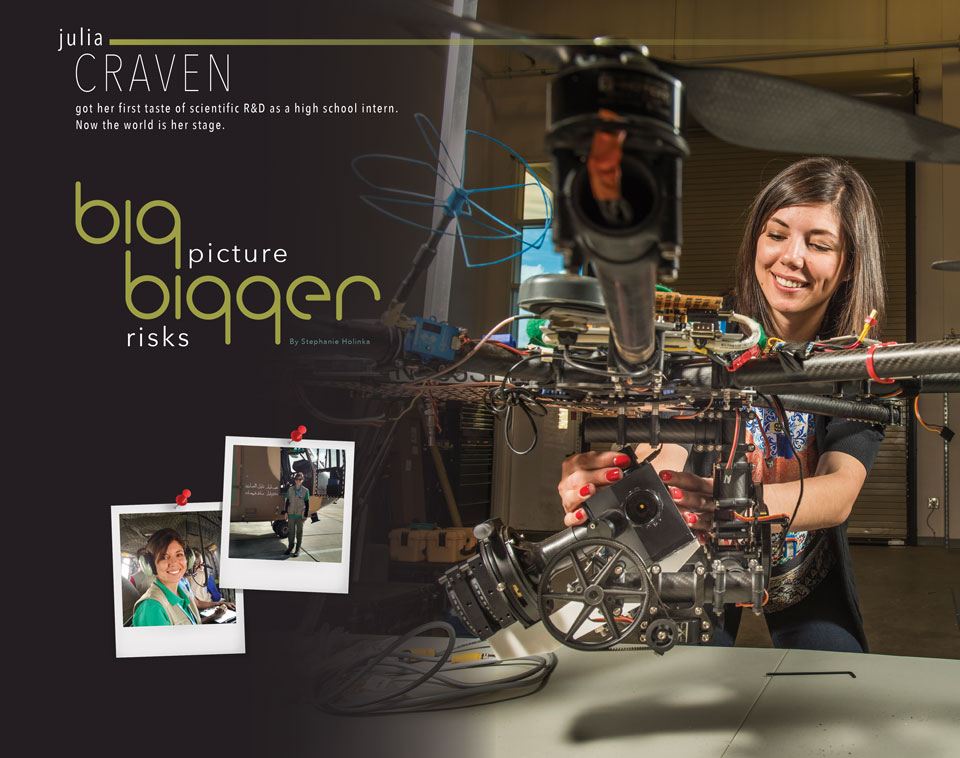Julia Craven got her first taste of scientific R&D as a high school intern. Now the world is her stage.


Julia Craven has come full circle at Sandia Labs, from summer intern to accomplished optical engineer and remote sensing scientist. “The positive experience I had as an intern was a primary motivator that led me to pursue a STEM [science, technology, engineering and mathematics] discipline in college,” she says.
Craven works in an area of the laboratory that provides technical capabilities to detect, monitor and assess targets relevant to nuclear nonproliferation, treaty verification and other national and global security missions. She is also the principal investigator on a Laboratory Directed Research and Development (LDRD) project using optical remote sensing tools and techniques to solve problems in the nuclear nonproliferation and treaty verification mission spaces.
Craven has been a member of technical staff at Sandia since 2011, but first came to the labs as a high school summer intern in the Advanced Materials Lab. “My experience there was my first exposure to what a career at a national lab could look like,” she says.
NNSA funded doctoral research

In 2006, Craven received a bachelor’s degree in physics from San Diego State University. She followed that with a master’s in 2008 and doctorate in 2011 in optical sciences from the University of Arizona. Craven’s doctoral research was funded through a grant from the National Nuclear Security Administration’s (NNSA) Defense Nuclear Nonproliferation Research and Development office, which continues to fund her work at Sandia.
“As a part of my university grant, I presented my work annually at reviews by national lab researchers, including several staff members from Sandia,” Craven says. Those reviews renewed her interest in working in the national lab community.
Craven’s current LDRD project investigates the use of optical imaging polarimetry for current and future remote sensing missions for national security applications. “Optical polarization describes the amplitude and phase of the electric field component of a light field,” she says. “Although substantial investments have been made by multiple agencies to produce polarization-sensitive optical sensors, the equivalent utility for polarization data for remote sensing missions has not been definitively established.”
So Craven’s work is focused on quantifying how, and perhaps if, the addition of polarimetric data products to conventional detection and discrimination capabilities can provide for overall enhanced sensing for national and global security applications. “On any given day, I could be in the lab testing sensors, in the field deploying systems and taking measurements or I could be meeting with other scientists and engineers to collaborate and share results,” Craven says. “I work with an amazing team of people both inside and outside Sandia.”
Nuclear Test Ban Treaty exercise

Craven was the only U.S. member of the 12-person External Evaluation Team for the Integrated Field Exercise 2014, the largest and most technologically advanced Comprehensive Nuclear Test Ban Treaty on-site inspection exercise completed to date. Her job was to examine the use of several optical remote sensing technologies used to inform the inspection team’s search activities. Craven won the NNSA Administrator’s Silver Medal for her work on the exercise, which was conducted in Vienna, Austria, and the Dead Sea region of Jordan.
Craven says her externally funded research focuses on the application of optical polarization to solve specific detection or identification problems, so the tie between her LDRD project and other work is very strong. But the LDRD focuses on characterizing fundamental phenomenology and exploitation approaches that ultimately could be applicable to a variety of mission spaces.
“LDRD lets researchers like me solve big-picture problems that external projects often don’t have the bandwidth for,” says Craven, who is a volunteer at the National Museum of Nuclear Science and History and in her free time enjoys cross country skiing and hiking with her dogs.
It also lets her take bigger risks than are possible in external projects. “Choosing to pursue a high-risk approach or solution when an external deliverable is on the line can be difficult, but with LDRD I feel I have more flexibility to take those risks — and that can lead to big rewards not just for Sandia but also the broader research community.”
Optical Polarization
Optical polarization describes the amplitude and phase of the electric field component of a light field. Some light we can see, and is referred to as visible light, while other light is invisible, like infrared or ultraviolet. However, all light is a type of electromagnetic (EM) radiation.
Other types include X-rays, microwaves and radio waves. For many applications, EM radiation can be treated as a wave consisting of two perpendicular field components: an electric field and a magnetic field. Each field component is a transverse oscillating wave that has amplitude and phase, but out of convention polarization is used to describe the electric field exclusively.
An optical polarimeter is a sensor that can be used to characterize the polarization state of a light field. When light interacts with a material or a surface, that material can alter the polarization state of the light field. Consequently, remote sensing scientists like Julia Craven often measure the polarization state of light to gather information on the surface properties of an object, like the roughness or structure, the light interacted with before reaching the observer.